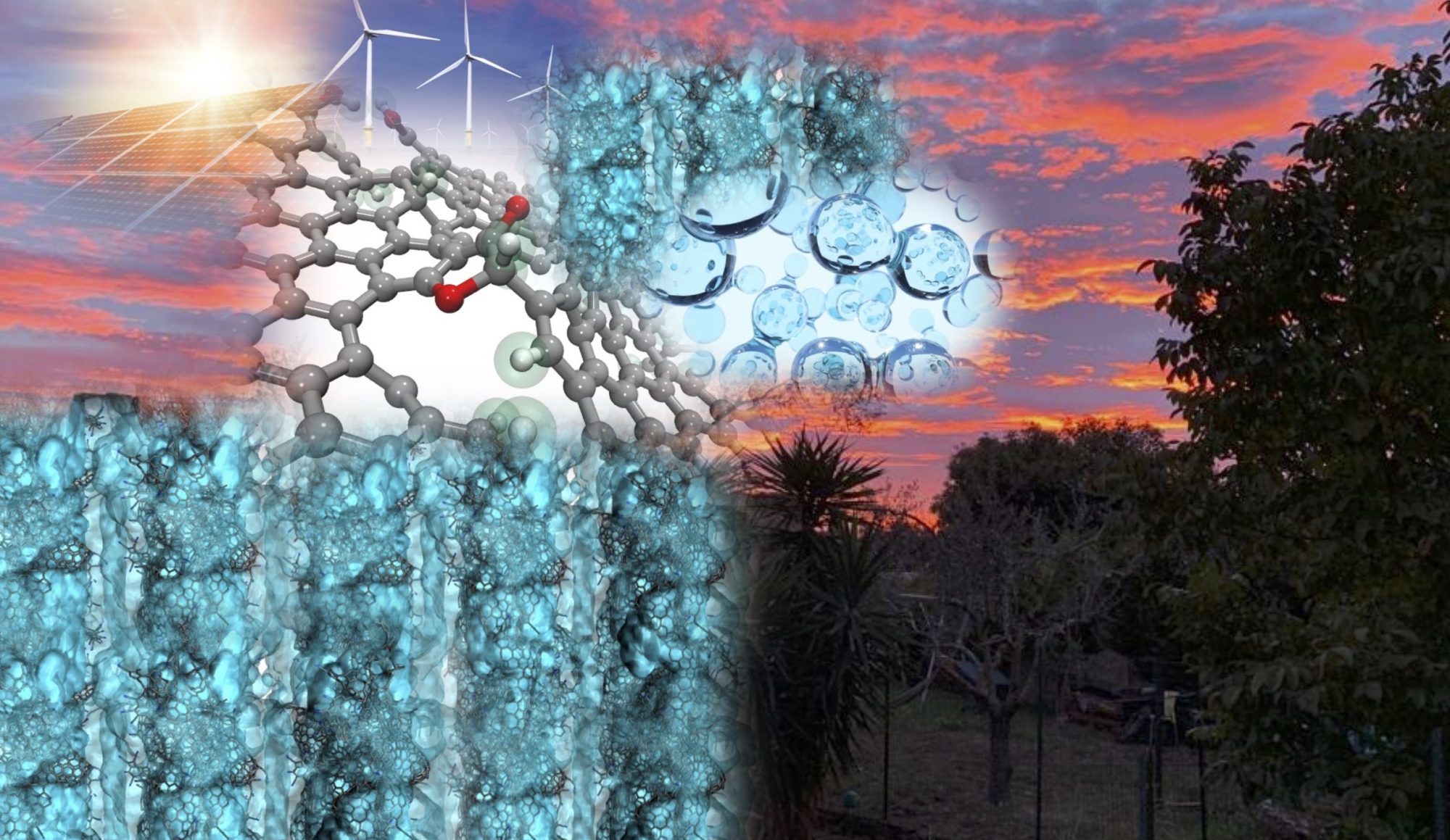
Thermoelectric polyelectrolytes are emerging as ideal material platform for self-powered bio-compatible electronic devices and sensors. However, despite the nanoscale nature of the ionic thermodiffusion processes underlying thermoelectric efficiency boost in polyelectrolytes, to date no evidence for direct probing of ionic diffusion on its relevant length and time scale has been reported. This gap is bridged by developing heat-driven hybrid nanotransistors based on InAs nanowires embedded in thermally biased Na+-functionalized (poly)ethyleneoxide, where the semiconducting nanostructure acts as a nanoscale probe sensitive to the local arrangement of the ionic species.
We addressed the impact of ionic thermoelectric gating on the nanodevice electrical response, investigating the effect of device architecture, bias configuration and frequency of the heat stimulus, and inferring optimal conditions for the heat-driven nanotransistor operation.
At the microscopic level, we investigated the inter-diffrusion of the polyelectrolyte and of Na+ through a multi-scale approach, where atomistic simulations ((a) and (b) panel aside) are used to parameterize a coarse grained model of the polyelectrolyte, in order to evaluate diffusion coefficient and the mixing dynamics (panel (c). The result is a complex diffusion mechanism involving the formation of chains of polar heads of the polyelectrolyte intercalated by Na+ions.
Microscopic quantities of the polyelectrolyte such as the ionic diffusion coefficient are extracted from the analysis of hysteretic behaviors rising in the nanodevices. The reported experimental platform enables simultaneously theionic thermodiffusion and nanoscale resolution, providing a framework for direct estimation of polyelectrolytes microscopic parameters. This may open new routes for heat-driven nanoelectronic applications and boost the rational design of next-generation polymer-based thermoelectric materials.

| People | Luca Bellucci, Alessia Colosimo, Lucia Sorba, Valentina Tozzini*, Valentina Zannier |
| Keywords | Ions, semiconductor nanostructures, transport, diffusion, soft-matter, electrolytes |
| Methods | Electrical transport, nanofabrication, shynthesis of semiconductor nanostructures, multiscale simulations |
| Granted Projects | PRIN2017 “PELM” (2019-2023), Centro Nazionale per la Mobilità Sostenibile (2022-2026), Ecosistema per la Transizione sostenibile In Emilia-Romagna (2022-2026) |
| Collaborations | Francesco Rossella, Università degli studi di Modena e Reggio Emilia |
| Dario Pisignano, Dip Fisica Università di Pisa | |
| Publications | |
| D. Prete, A. Colosimo, V. Demontis, L. Medda, V. Zannier, L. Bellucci, V. Tozzini, L. Sorba, F. Beltram, D. Pisignano, and F. Rossella, Heat driven iontronic nanotransistors, Adv Sci (2023) | |
| D. Prete, E. Dimaggio, V.Demontis, V. Zannier, M.-J. Rodriguez Douton, L. Guazzelli, F. Beltram, L. Sorba, G. Pennelli, and F. Rossella, Electrostatic control of the thermoelectric figure of merit in ion-gated nanotransistors, Adv. Funct. Mat. (2021) | |
| J. Lieb, V. Demontis, D. Prete, D. Ercolani, V. Zannier, L. Sorba, S. Ono, F. Beltram, B. Sacepe and F. Rossella, Ionic liquid gating of InAs nanowire-based field effect transistors, Adv. Funct. Mater. (2019) | |
| D. Prete, J. Lieb, V. Demontis, L. Bellucci, V. Tozzini, D. Ercolani, V. Zannier, L. Sorba, S. Ono, F. Beltram, B. Sacépé and F. Rossella, III-V semicondutor nanostructures and iontronics: InAs nanowire-based electric double layer field effect transistors, AIP Conference Proceedings (2019) |

